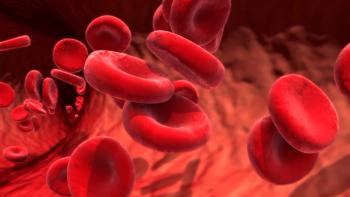
Implementing an enhanced recovery pathway in your surgical practice
Tips to provide better care for patients and improve the value of the healthcare dollar.
References:
1. Greco M, Capretti G, Beretta L, Gemma M, Pecorelli N, Braga M. Enhanced recovery program in colorectal surgery: a meta-analysis of randomized controlled trials. World J Surg. 2014 Jun;38(6):1531-41.2. Nicholson A, Lowe MC, Parker J, Lewis SR, Alderson P, Smith AF. Systematic review and meta-analysis of enhanced recovery programmes in surgical patients. Br J Surg. 2014 Feb;101(3):172-88.3. Ljungqvist O, Scott M, Fearon KC. Enhanced Recovery After Surgery: a review. JAMA Surg. 2017 Mar 1;152(3):292-298.4. Lawrence D. Egbert, M.D., George E. Battit, M.D., Claude E. Welch, M.D., and Marshall K. Bartlett, M.D. Reduction of postoperative pain by encouragement and instruction of patients - a study of doctor-patient rapport. N Engl J Med. 1964; 270:825-8275. L.T. Sorenson. Wound healing and infection in surgery: the pathophysiologic impact of smoking, smoking cessation, and nicotine replacement therapy: a systematic review. Ann. Surg. 2012;266(6): 1069 â 1079.6. Wong J, Lam DP, Abrishami A, Chan MT, Chung F. Short-term preoperative smoking cessation and postoperative complications: a systematic review and meta-analysis. Can J Anaesth. 2012 Mar;59(3):268-79.7. Oppedal K, Møller AM, Pedersen B, Tønnesen H. Preoperative alcohol cessation prior to elective surgery. Cochrane Database Syst Rev. 2012 Jul 11;(7):CD008343.8. Tonnesen H, Kehlet H. Preoperative alcoholism and postoperative morbidity. Br J Surg. 1999;86:869â874.9. Tonnesen H, Rosenberg J, Nielsen HJ, et al. Effect of preoperative abstinence on poor postoperative outcome in alcohol misusers: randomised controlled trial. BMJ. 1999;318:1311â131610. Arnold A, Aitchison LP, Abbott J. Preoperative mechanical bowel preparation for abdominal, laparoscopic, and vaginal Surgery: a systematic review. J Minim Invasive Gynecol. 2015 Jul-Aug;22(5):737-52.11. Brady M, Kinn S, Stuart P. Preoperative fasting for adults to prevent perioperative complications. Cochrane Database Syst Rev. 2003;(4):CD004423.12. Smith MD1, McCall J, Plank L, Herbison GP, Soop M, Nygren J. Preoperative carbohydrate treatment for enhancing recovery after elective surgery. Cochrane Database Syst Rev. 2014 Aug 14;(8):CD009161.13. Walker KJ, Smith AF. Premedication for anxiety in adult day surgery. Cochrane Database Syst Rev. 2009 Oct 7;(4):CD002192.14. Moiniche S, Henrik K, Dahl J. A qualitative and quantitative systematic review of preemptive analgesia for postoperative pain relief: The role of timing of analgesia. Anesthesiology. 2002:96:725-41.15. Choosing Route of Hysterectomy for Benign Disease. Committee Opinion No. 701. American College of Obstetricians and Gynecologists. Obstet Gynecol. 2017:129:e155â9.16. Ohtani H, Tamamori Y, Arimoto Y, Nishiguchi Y, Maeda K, Hirakawa K. A meta-analysis of the short- and long-term results of randomized controlled trials that compared laparoscopy-assisted and conventional open surgery for colorectal cancer. J Cancer. 2011;2:425-34.17. Nelson R, Edwards S, Tse B. Prophylactic nasogastric decompression after abdominal surgery. Cochrane Database Syst Rev. 2007 Jul 18;(3):CD004929.18. Hart S, Bordes B, Hart J, Corsino D, Harmon D. Unintended perioperative hypothermia. Ochsner J. 2011 Fall;11(3): 259â270.19. Schol PB, Terink IM, Lancé MD, Scheepers HC Liberal or restrictive fluid management during elective surgery: a systematic review and meta-analysis. J Clin Anesth. 2016 Dec;35:26-39.20. Corcoran T, Rhodes JE, Clarke S, Myles PS, Ho KM. Perioperative fluid management strategies in major surgery: a stratified meta-analysis. Anesth Analg. 2012 Mar;114(3):640-51.21. Miller TE, Raghunathan K, Gan TJ. State-of-the-art fluid management in the operating room. Best Pract Res Clin Anaesthesiol. 2014 Sep;28(3):261-73.22. Charoenkwan K, Matovinovic E. Early versus delayed oral fluids and food for reducing complications after major abdominal gynaecologic surgery. Cochrane Database Syst Rev. 2014 Dec 12;(12):CD004508.23. Wong M, Morris S, Wang K, Simpson K. Managing Postoperative pain after minimally invasive gynecologic surgery in the era of the opioid epidemic. JMIG. 2017 Sept24. Nelson G, Altman A, Meyer LA, et al. Guidelines for postoperative care in gynecologic/oncology surgery: Enhanced Recovery After Surgery (ERAS) Society recommendations â Part II. Gynecologic Oncol. 140. 2016 323-332.
Newsletter
Get the latest clinical updates, case studies, and expert commentary in obstetric and gynecologic care. Sign up now to stay informed.










